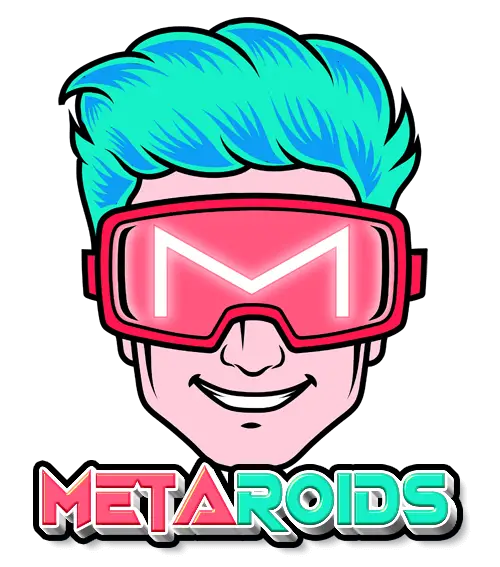The advent of Large Language Models (LLMs) has unleashed a torrent of possibilities for cutting-edge technology. These powerful computer programs, capable of processing vast amounts of human language data, have paved the way for revolutionary tools like advanced chatbots and voice-controlled devices.
Perhaps the most striking example of this technology in action is ChatGPT, one of today’s hottest internet sensations as of late. ChatGPT is an AI platform that represents the forefront of what we can achieve when we infuse natural language with AI.
But as humans continue to push the boundaries of what’s possible, we are also turning our attention to another frontier: decoding the languages of animals. This article will explore the latest progress in this research, the potential opportunities it could unlock, and the possible risks it could unleash.
Unlocking The Secrets of Animal Languages
Katie Zacarian is the chief executive officer (CEO) and co-founder of the Earth Species Project (ESP), a California-based non-profit that leverages AI to decipher animal languages.
ESP’s ambitious goal is to deepen our understanding of animals and use this knowledge to enhance humanity’s efforts to sustain and conserve the planet.

Moreover, Zacarian says that the AI technology they are developing is rapidly approaching the point of practical application. This means that they could soon break the millennia-old language barrier between humans and animals.
With the advent of two-way communication between species, we may finally gain a new perspective on the true impact of humanity’s destruction of the natural world, which is mainly driven by capitalism. This could also compel us to rethink our ways and finally initiate serious efforts to conserve our planet.
For years, the Earth Species Project has been making huge leaps in AI that can crunch vast amounts of data to understand the language of jungle (and seas).

Moreover, the organization has discovered that animals’ interactions are not limited to oral conversations but include physical and visual elements, much like how people interact with each other through non-verbal cues.
But this similarity doesn’t make the researchers’ job easier; in fact, it makes their job a lot more complex as they must analyze vast amounts of data for each aspect of these conversations. ESP also intends to know why animals are using oral, visual, or physical communication in a specific situation. Do these selections have anything to do with their environment, present situation, or motivation?
Furthermore, it also intends to gain a deeper understanding of their interaction patterns and how they can be applied to improve human relationships with animals and the natural world.
Vast Amounts Of Available Data
The ESP is fortunate to have a wealth of data at its disposal through its partnerships with over 40 ecological and biological institutions across the globe.
These institutions use state-of-the-art instruments such as recording devices and sensors placed in remote locations, from mountain tops to the depths of the sea, to gather records of animal conversations.
By leveraging the power of artificial intelligence to aggregate and analyze these data, ESP is stitching these crucial pieces together to better understand our fellow earthly creatures.
Innovations In Bioacoustics
As ESP’s AI delves into the rich pool of animal language data, it meticulously analyzes both the “bioacoustic” and “ecoacoustic” aspects of these recordings.
“Bioacoustics” refers to the unique sounds produced by individual species, while “ecoacoustics” is about the recordings of the animal’s ecosystem as a whole. By analyzing data from both the animals and their environment, ESP’s AI can connect crucial dots and help researchers gain a deeper understanding of the intricacies of animal languages.
While ESP has a deep interest in understanding all creatures’ communication methods, it highlighted that sea animals – particularly cetaceans – present the most interesting information of all.
Cetaceans, which include dolphins, whales, and other marine mammals, have captivated ESP’s researchers as they have been in this world for 34 million years.

ESP believes that the language, social, and cultural development that has occurred over such an enormous time frame has the potential to offer critical insights into its bioacoustic research.
The unique and complex aspects of cetacean languages offer an opportunity for ESP researchers to understand the evolution of animal interactions and how it impacted their very nature.
Discovering New Species
A separate team of researchers (not connected with ESP) is also using bioacoustics to make groundbreaking discoveries. In fact, they have utilized this method to discover new species of blue whales.
According to the researchers, each population of blue whales has distinct vocal signatures, which scientists have leveraged to identify and study them. This approach has proven so effective that they have grouped blue whales according to their “acoustic groups.”
Using bioacoustic techniques to identify and understand different populations of blue whales is a great example of how humans can use this technology to make discoveries and better understand the world around us.
Understanding Humans’ Impact
Through the analysis of animal language, experts can gain a deeper knowledge of how people’s activities impact the environment.
Through bioacoustics, experts could soon potentially understand the true effects of illegal logging, dynamite fishing, and other harmful activities on the animal kingdom. Moreover, it may allow scientists to hear the stress and panic in the animals’ voices as their habitats are being disturbed and destroyed.
These insights could lead to better conservation efforts as experts can know how these creatures are affected by human activities, leading them to deploy appropriate solutions. It may also lead to stronger laws that would put more protection on animals and their habitats.

The progress happening in this field is already showing promising results. On the West Coast of the United States, researchers have used AI to analyze marine communication, which has led to the creation of key protection zones in the area.
This serves as a prime example of how bioacoustic research can protect and preserve the natural world, and it is an encouraging sign of what is yet to come.
Potential Dangers Of Bioacoustics
While the prospect of understanding animal languages holds great promise, the idea of establishing two-way interactions between humans and animals raises ethical concerns.
This can be realized just by looking at how we communicate as humans. Our ability to communicate with one another has not always led to a better world. In fact, it often resulted in disturbances and even irreversible damage.
Karen Bakker, an author, and professor at the University of British Columbia, has raised an important question of whether animals would really like to talk to us. Some experts worry that our attempts to communicate with them could cause more harm than good.
Maybe if they could talk to us, they would tell us to go away.”
Karen Bakker, author of “The Sounds of Life: How Digital Technology is Bringing Us Closer to the Worlds of Animals and Plants.”
Another concern is the potential for two-way communication between animals and artificial intelligence. The field of AI is still relatively new and rapidly evolving, and we don’t yet fully understand how our relationship with these technologies will develop in the future.
The idea of using AI to talk with animals raises concerns about the potential consequences of such interactions. There is a risk that deploying this technology prematurely could potentially cause unexpected harm to animals.
In light of this, we must ensure that any efforts to communicate with animals are grounded in a deep respect for their autonomy and that we are careful not to impose our own agenda on them.
Despite the potential challenges, the fusion of artificial intelligence and bioacoustics holds great promise for every creature in this world. Moreover, they have the potential to be one of humanity’s greatest achievements, giving us a deeper knowledge of not just animals but also of ourselves.
You might also like:
- AI-Powered Sexbots and the Risks They Could Trigger in the Future
- AI Chatbot Passes Wharton MBA Examination
Join our newsletter as we build a community of AI and web3 pioneers.
The next 3-5 years is when new industry titans will emerge, and we want you to be one of them.
Benefits include:
- Receive updates on the most significant trends
- Receive crucial insights that will help you stay ahead in the tech world
- The chance to be part of our OG community, which will have exclusive membership perks



